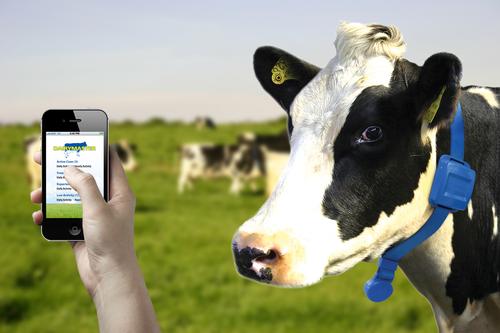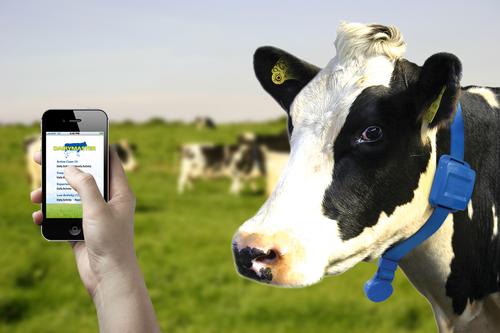Thinking Outside the Mobile 'Box'
August 1, 2013

By now you've probably figured out that there are a bunch of micro-electromechanical systems (MEMS) devices inside smartphones and myriad other mobile consumer devices. But did you know that MEMS is also revolutionizing how dairy cows are managed and that it's a potentially $40 billion business?
I learned this recently from Dr. Alissa Fitzgerald's presentation at Sensors Expo 2013, "Thinking outside the (mobile) box: Other important high-value applications for sensor fusion."
The cows wear MooMonitor, a collar outfitted with a motion sensor (MEMS accelerometer) and a temperature sensor that indicates when the mama cow is hitting peak fertility and is ready for reproduction. It's called a "bovine estrus cycle detection" app, and you can get updates from the cows via iPhone right there on the dairy farm. There are a staggering 265 million dairy cows in the world that could wear these collars, and whose farmers can benefit from this application. This is a fine example of someone figuring out a way to make a ton of money in MEMS with a non-consumer mobile device.

Fitzgerald identified several other MEMS-based applications in markets that some might call "unsexy" but that actually have big potential. In home maintenance equipment, we have robotic vacuum cleaners (Roomba), gutter cleaners (Looj), and even pool cleaners (Mirra) -- all made by iRobot. Even the big home appliance makers like Whirlpool and LG are getting into the action with "smart-home" goods such as clothes dryers embedded with humidity sensors.
While the thermostats that control HVAC might not seem like a huge market opportunity, Fitzgerald encouraged us to think again about this humble piece of electronics. There are 10 million thermostats purchased in the US each year, and 250 million already installed in homes and light commercial buildings. That's a market ripe for smart MEMS-enabled systems that can intelligently sense a home's/office's heating/cooling needs.
Enter the Nest Learning Thermostat that has multiple MEMS temperature sensors, IR motion detectors, and behavior analysis and prediction, and voila! You finally have a thermostat that can save you money on your HVAC. And the best news yet? Nest is intuitive, so you don't have to read a huge manual on how to program it. Fitzgerald estimated that based on the annual sale unit numbers, and estimating the cost of a thermostat at $50 to $250, the total available market for thermostats to control household HVAC would be at least $0.5 billion and possibly as high as $2.5 billion annually in the US. It's looking a lot sexier now, right?
The success of MEMS beyond the mobile-consumer space is still a well-kept secret. While health/fitness and medical devices are gaining some ground, Fitzgerald reminded us that there are many other huge industries that are often overlooked by MEMS product companies and market analysts. These include oil and gas, steel, agriculture, textiles, and mining, for starters. Fitzgerald believes that billion-dollar business opportunities are out there for companies that can think outside the box, instead of just providing more cool stuff for urban gadget hounds.
So let's hear it for MEMS-enabled products that help people in other large industries to get their work done in the oil fields of Texas and on the dairy farms of Wisconsin.
Related posts:
About the Author(s)
You May Also Like



